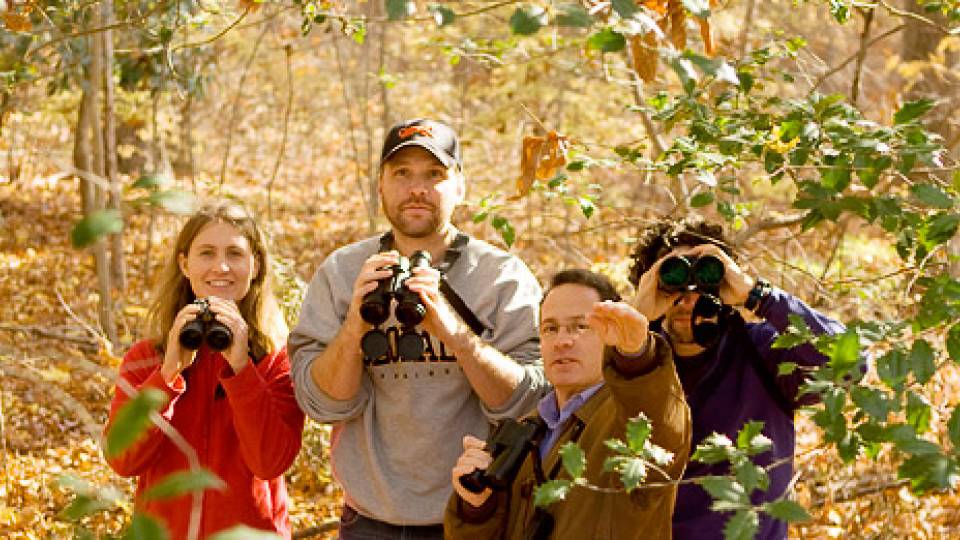
Simon Levin (Photo: Denise Applewhite)
In his new book, "The Princeton Guide to Ecology," Princeton professor Simon Levin has tapped more than 130 experts to compile a concise, authoritative one-volume reference to the major subjects and concepts in ecology.
The book "is a timely and important one," said Robert May, a professor of zoology at the University of Oxford and a former chief scientific adviser to the government of England. It also is a hefty one, at just under 850 pages.
"I hope it will appeal to a broad audience, from professionals in the field to people who want some introduction to aspects of ecology," said Levin, the George Moffett Professor of Biology and a professor of ecology and evolutionary biology, who served as editor of the book just released by Princeton University Press.
Levin, a Princeton faculty member since 1992, won the Kyoto Prize in Basic Sciences in 2005 and the Heineken Prize for Environmental Sciences in 2004. He is director of the University's Center for BioComplexity and was founding director of the Princeton Environmental Institute.
Levin worked on the book for three years with seven associate editors, among them David Wilcove, who is a professor of ecology and evolutionary biology and a professor of public affairs in the Woodrow Wilson School of Public and International Affairs, as well as the director of the Program in Environmental Studies in the Princeton Environmental Institute. A total of 137 ecologists from around the world contributed to the book, among them Princeton scholars Ryan Chisholm, a graduate student, and Martin Wikelski, director of the Max Planck Institute for Ornithology in Germany who is a former Princeton faculty member and now a visiting research scholar, both from the Department of Ecology and Evolutionary Biology.
The book's intended audience is undergraduate and graduate students, research ecologists, scientists in related fields, policymakers and anyone else with a serious interest in ecology.

Closely related species can have very different functional ways of dealing with temperature and moisture availability. Here, four closely related species of the Hawaiian silversword have developed differently in different environments — some are large and tree-like, while others look simply like flowers. (Photos: Gerald Carr, Reprinted With Permission of Princeton University Press)

One of the fundamental questions of ecology is: What explains the geographic distribution of species? Temperature and precipitation are the primary factors. In this illustration, the top map shows temperature, the middle map shows the amount of available light for photosynthesis and the bottom map shows the distribution of chlorophyll produced by plants, with red indicating the most plants and purple indicating the least. (Images: NASA Ocean Biology Processing Group, Reprinted With Permission of Princeton University Press)
The guide covers everything from the fundamentals of ecology to its applications to conservation biology, climate change and implications for ecosystems, as well as general problems of managing the biosphere and fisheries management. There also are several chapters on ecological economics, a new and rapidly developing field that examines the interplay between ecology and economics.
The book is divided into seven major areas: autecology (how a single species interacts with the environment), population ecology, communities and ecosystems, landscapes and the biosphere, conservation biology, ecosystem services, and biosphere management. There are more than 200 illustrations, a glossary of key terms, a chronology of milestones in the field and suggestions for further reading on each topic.
The book "brings together in one place accessible articles written by the leading experts across the important field of ecology," said James Gustave Speth, dean of the Yale School of Forestry and Environmental Studies. "Ecology has grown and repeatedly subdivided in recent years, but now we have it back together again with this enormously useful framework and compendium.

Water is key for plants because it carries nutrients that are crucial to their survival, growth and reproduction. This illustration shows the different kinds of freshwater ecosystems and how water flows among them, the groundwater, the bordering ecosystems and the atmosphere. (Image: Reprinted With Permission of Princeton University Press)



